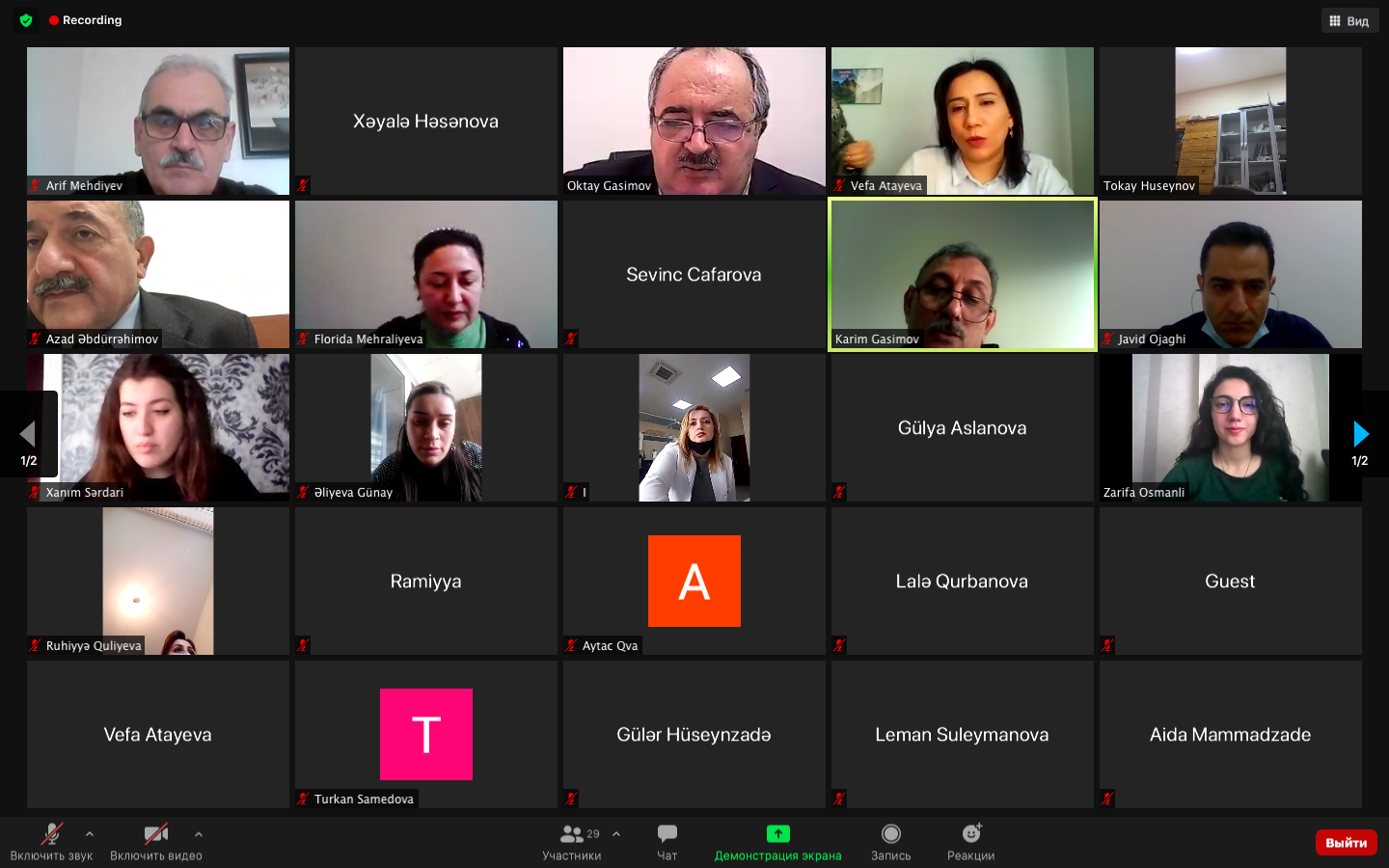
On February 5, the Laboratory of Integrative Biology of the Institute of Biophysics of ANAS organized an online seminar on the topic “Abstract of alternative proteomes obtained as a result of alternative splicing and frameshifting”.
At the online seminar, which was organized on the “Zoom” platform, the junior researcher of the Laboratory of Integrative biology, the winner of the double doctoral program organized jointly by ANAS and Montpellier University of France for the 2019-2022 academic years, Zarifa Osmanli spoke on the topic.
She noted that the main research area of the Laboratory of Structural Bioinformatics and Molecular Modeling (Institute of Cell Biology, CNRS) is the study of the structure and functions of proteins using bioinformatics programs based on their amino acid sequences. Emphasizing that there are two main regions of proteins, the globular and the non-globular, she noted that the non-globular, in turn, are divided into aggregation-prone motifs, intrinsically disordered regions and tandem repeating subgroups. She informed that the laboratory is currently creating, improving and integrating bioinformatics programs for a large-scale analysis of the listed areas and subgroups, and also pointed out that the main focus of her Ph.D. is the study of dark proteomes using existing bioinformatics programs and writing new programs.
According to the reporter, many mechanisms of transcription and post-transcription lead to the formation of new proteins and isoforms of these proteins. Among these mechanisms, a special place is occupied by the mechanisms of “Alternative splicing” and “frameshifting”. The structural and functional analysis of alternative proteomes obtained by these mechanisms is the main part of the study. Abstract alternative pre-mRNA proteomes are a widespread mechanism that absorb a variety of proteins in eukaryotic organisms. Comparative analysis of isoform and reference protein sequences is carried out taking into account the possibility of obtaining several isoform proteins formed from a single coding region. Abstract of alternative proteomes is used for in-depth study of genome coding regions, identification of potentially new proteins, and recognition of genome regions that are more affected by evolution. The young scientist also stressed that until recently, it was discovered that “frameshift”, which only leads to the appearance of mutant proteins or premature stop codon, was already a method used to create new proteins in the process of evolution.
After hearing the report, discussions were held on the subject. The General Director of the Institute, corresponding member of ANAS Oktay Gasimov, deputy director for scientific affairs, Dr. Biology Karim Gasimov, head of the laboratory of Integrative biology, corresponding member of ANAS Ilham Shahmuradov, head of the laboratory Molecular Basis of Integrative Activity of the institute of Physiology Arif Mehdiyev and others took part in the discussions.